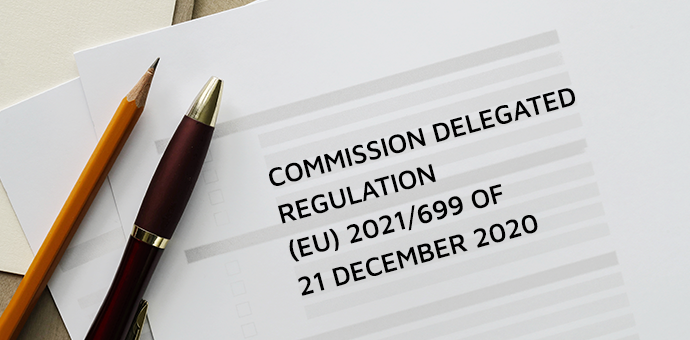Commission Delegated Regulation (EU) 2021/699 of 21 Dec 2020 – Note the implication of Commission Delegated (As opposed to Commission Implemented) – Means EASA has taken responsibility for this from the European Commission (EC)
Review by Sofema Online (SOL) www.sofemaonline.com Concerning several updates to Part 21
The purpose of this change includes addressing the following:
- Improve the quality of Data supporting ICAW
- Consolidate Record-Keeping Manuals & ICAW
- Fitment of Parts without EASA Form 1
- Update Part 21 to include reference to Part ML
ICAW is the responsibility of the design approval holders (DAH) to produce the data, procedures, instructions, and manuals necessary to ensure the continued airworthiness of a civil aircraft, as well as for the approval of changes and repairs to type certificates and restricted type certificates.
- Instructions for continued airworthiness have to be developed by design approval holders as part of the product or part certification to ensure that the product or part remains airworthy during its intended life.
- As the existing rules are not clear enough, type-certificate holders may interpret differently what is a complete set of instructions for continued airworthiness and to what level they are required to control the data that constitutes the instructions for continued airworthiness.
- Therefore, it is necessary to provide a definition for ‘instructions for continued airworthiness’ and to establish instructions for continued airworthiness as part of the type certificate in order to strengthen their control by the design approval holder, including the amendments to the instructions for continued airworthiness.
- The requirements for record-keeping, manuals, and instructions for continued airworthiness are spread among the various subparts of Annex I (Part 21) to Regulation (EU) No 748/2012, leading to duplication of similar requirements. Therefore, those requirements should be merged into a single requirement for each of those subjects.
Part Eligibility Changes
Requires Form 1 unless it is a standard part or it meets certain requirements and is installed in an ELA 1 or in an ELA 2.
For parts and appliances for which their effect on the safety of the operation of aircraft is negligible in case of non-conformity with their design, a high production standard, as certified with an EASA Form 1, does not provide additional safety for air operations, and the issuance of an EASA Form 1 creates an unnecessary administrative burden.
- It should be permitted to produce certain parts and appliances without the need to certify their conformity with the approved design data through the issuance of an EASA Form 1, as well as to permit the installation of such parts and appliances in type-certified products.
- An organisation responsible for the manufacture of products, parts, and appliances shall demonstrate its capability in accordance with the provisions of Annex I (Part 21).
o This demonstration of capability is not required for the parts or appliances that an organisation manufactures which, in accordance with the provisions of Annex I (Part 21), are eligible for installation in a type-certified product without the need to be accompanied by an authorised release certificate (i.e. EASA Form 1).
Note – Parts and appliances listed in point are eligible for installation in a type-certified product without being accompanied by an EASA Form 1, provided that the installer holds a document issued by the person or organisation that manufactured the part or appliance, which declares the name of the part or appliance, the part number, and the conformity of the part or appliance with its design data, and which contains the issuance date.
Ageing Aircraft
Depends on such factors:
- Age
- Flight cycles
- Flight hours
Service experience has shown that there is a need to continuously update knowledge about the structural integrity of aging aircraft.
Ref (EU) 2020/1159 & (EU) 2015/640 as regards the introduction of new additional airworthiness requirements
- Introduced new requirements for aircraft in service in order to keep up-to-date knowledge about aging factors on the basis of real-time operational experience and with the use of modern tools of analysis and testing.
- Those requirements should ensure that design approval holders follow procedures, produce the data, and make instructions and manuals for existing design available to operators for them to implement in a timely manner in order to prevent aging structure failures.
It is necessary to amend existing rules to achieve the same level of safety when large aeroplane structure will be subject to future structural changes or repairs developed and approved in accordance with Regulation (EU) No 748/2012, and to add a requirement that any future holder of the type-certificate or restricted type-certificate for a large aeroplane shall ensure that the continuing structural integrity programme remains valid throughout the operational life of the aeroplane.
Concerning Part 21 Subpart H – Certificates of Airworthiness and Restricted Certificates of Airworthiness
Include reference to New Part ML for Aircraft below 2730kgs
Next Steps
Sofema Aviation Services www.sassofia.com and Sofema Online www.sofemaonline.com provide Classroom, Webinar and Online EASA regulatory complaint and vocational training – for comments & questions please email team@sassofia.com
Tags:
Aging Aircraft, Airworthiness, Civil aircraft, DAH, easa part 21, EASA Part-ML, ICAW, Regulation (EU) 2021/699, Regulation (EU) No 748/2012, Regulatory updates, SAS blogs, Training courses




